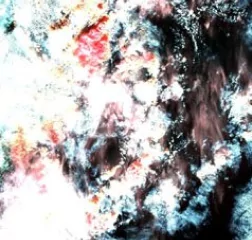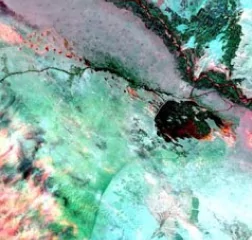Snow / Cloud Band Combination
Snow / Cloud band combination (Blue, SWIR1, SWIR2). Lack of SWIR band, in a band combination, makes it difficult to separate clouds from snow using the only graphic to NIR spectral information. On the other hand, from sequential aspect view, it’s evident that clouds can’t persistently stay at the same place because of its agility characteristics. For that reason, disruption can be caused by the cloud presence if the surface reflectance has a huge variation in time series observation. This band combination is effective and can be used to isolate clouds from snow.
An essential property of the band combination is that it has the ability to identify a number of different features distributed across the range of the earth atmosphere. This not only covers the visual spectrum allowing a color image to record and observing snow and cloud density but also include different parts of the infrared spectrum with a specific interest to identify and differentiate earth surface properties.
Interpretation Of Blue, SWIR1, SWIR2 Band Combination
The combination is mostly used for indicating ice and snow because of their reflective ability in the observable part of the spectrum, and are very porous in short-wave infrared. As the only visible light used in the images, it is allocated to red which makes the ice and snow appear bright red. There is a stronger absorption in the shortwave infrared bands as the ice increases leading to more red color in the image. Small ice crystals in high-level clouds appear reddish-orange or peach, and thick ice snow looks vivid red (or red-orange). Bare soil appears bright cyan and vegetation seem greenish in the image. Water on the ground is very dark as it absorbs the SWIR and the red, but small (liquid) water drops in the clouds scatter the light equally in both visible and the SWIR, and therefore it appears white. Water Sediments are displayed as dark red.
This combination of bands is significantly useful for distinguishing clouds from snow. Old snow can develop a solid crust, and the moisture content rises this makes it less reflective in the SWIR region. It is possible for old and new snow comparison by its SWIR reflectance. However, it is not suitable for identification of features like lands, street patterns within the urban areas, highways, and urban built-up or cemented areas. It also cannot enhance a detailed image of the vegetation growth.



